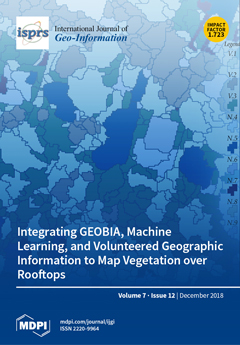This paper focuses on the spatial autocorrelation parameter ρ of the simultaneous autoregressive model, and furnishes its sampling distribution for nonzero values, for two regular square (rook and queen) tessellations as well as a hexagonal case with rook connectivity, using Monte Carlo simulation
[...] Read more.
This paper focuses on the spatial autocorrelation parameter ρ of the simultaneous autoregressive model, and furnishes its sampling distribution for nonzero values, for two regular square (rook and queen) tessellations as well as a hexagonal case with rook connectivity, using Monte Carlo simulation experiments with a large sample size. The regular square lattice directly relates to increasingly used, remotely sensed images, whereas the regular hexagonal configuration is frequently used in sampling and aggregation situations. Results suggest an asymptotic normal distribution for estimated
ρ. More specifically, this paper posits functions between
ρ and its variance for three adjacency structures, which makes hypothesis testing implementable and furnishes an easily-computed version of the asymptotic variance for
ρ at zero for each configuration. In addition, it also presents three examples, where the first employed a simulated dataset for a zero spatial autocorrelation case, and the other two used two empirical datasets—of these, one is a census block dataset for Wuhan (with a Moran coefficient of 0.53, allowing a null hypothesis of, e.g.,
ρ=0.7) to illustrate a moderate spatial autocorrelation case, and the other is a remotely sensed image of the Yellow Mountain region, China (with a Moran coefficient of 0.91, allowing a null hypothesis of, e.g.,
ρ=0.95) to illustrate a high spatial autocorrelation case.
Full article





